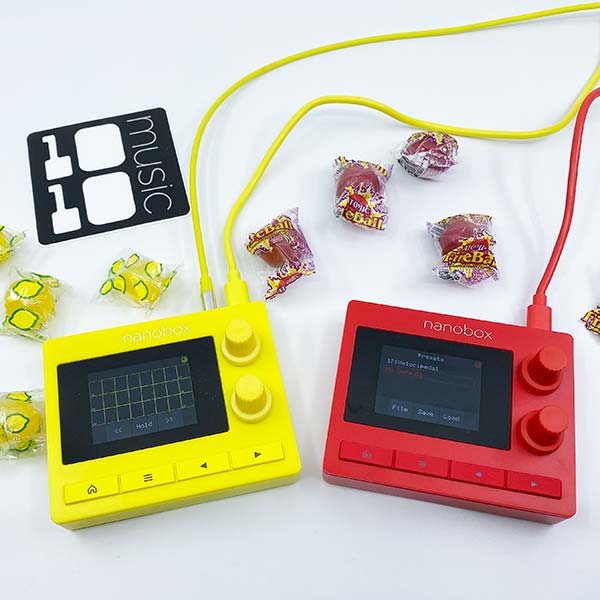1010Music Nanobox Lemondrop and Fireball Review
1010Music has announced a new synthesizer series called the nanobox. FutureMusic got a chance to evaluate pre-production units of the first two modules, the Fireball and the Lemondrop and came away impressed on what Aaron Higgins and his team at 1010Music were able to accomplish. The Fireball is a wavetable synth – yes, you can upload your own – with eight voice polyphony, two wavetables and an oscillator. The Lemondrop employs granular synthesis and features four voice polyphony, two granulators and an oscillator.
As with 1010Music’s recent offerings, both units are impossibly small – basically the form factor of a deck of playing cards with two knobs sticking out of the top. We were absolutely blown away on how many features 1010 was able to pack into their Bluebox mixer: “Wait! This thing also records??!” Thus, we weren’t as surprised when we witnessed the diminutive size of the Lemondrop and Firebox for the first time. But still, for synths, they’re tiny.
We asked Aaron Higgins about his obsession for this micro form factor that’s help define 1010Music and set him apart from competitors. “Our company started with Eurorack modules,” Higgins explained. “That taught us two important lessons: 1) You can pack a lot of stuff into a small space and 2) musicians like to create their own instruments by curating different modules. Our previous experience also includes iOS apps, where touch screens can do amazing things in a small space. When we started working on tabletop gear, we asked ourselves why is everything in this market so big? It doesn’t make sense when you are trying to combine multiple elements together. So, we set out to create gear that was lightweight, portable, and plays nicely with others. We wanted people to be able to create a suitcase rig with all their favorite gear.”

First, let’s take a look at the yellow Lemondrop synthesizer. The Lemondrop’s granular synthesis employs two granulators and an oscillator to deliver everything from delicate tinkles to booming leads, as well as textured pads that we found paired brilliantly with some of the more innovative guitar pedals on the market, including our favorite, Hologram’s Microcosm. For such a small synth, we found there are a surprising number of parameter’s to tweak. It takes a minute to get used to the interface, since it’s not very apparent what is controlled by the touchscreen and what is modulated by the knobs and buttons. However, once you get your arms around the interface, navigating the innards is quite easy. Better yet, the Fireball utilizes the same methodology, so once you learn one, you can just jump into the other.
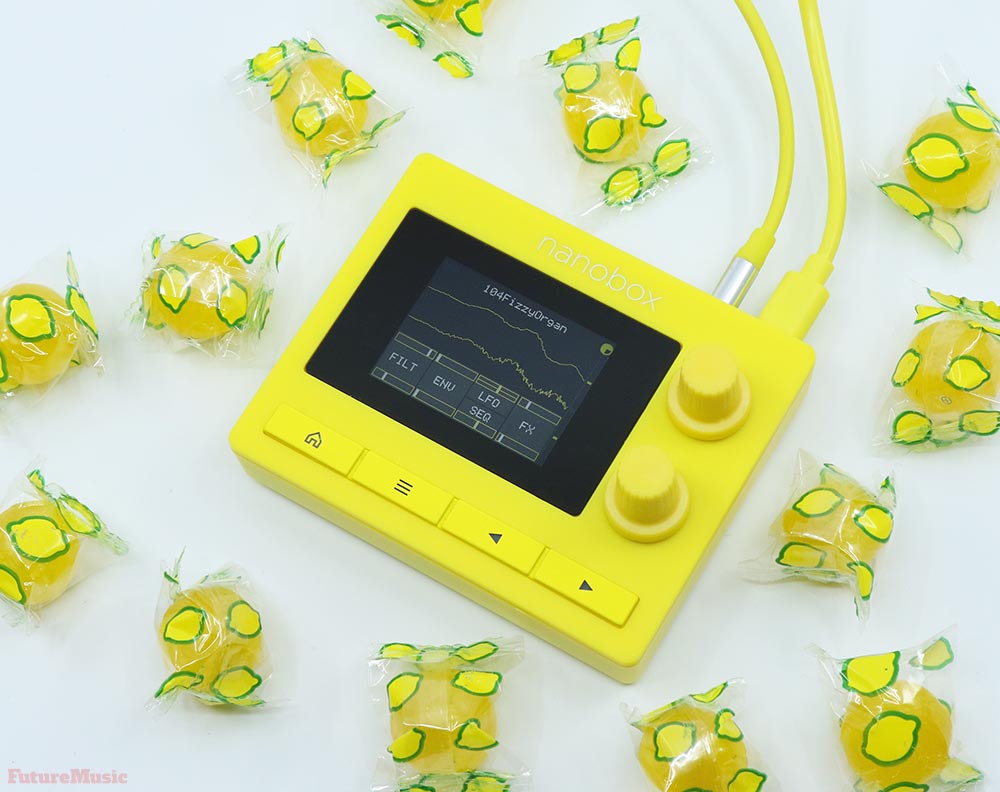
Considering its size, you would assume that the Lemondrop – as well as the Fireball – would come with a software editor, but 1010Music feels this is unnecessary. “We’ve worked hard to make both Lemondrop and Fireball as intuitive as possible to eliminate the need for a separate patch editor,” reveals Higgins. “We’ve included touches like animating the grains on Lemondrop, displaying the current wavetable cycle on Fireball, as well as graphical filters, LFO’s, envelopes, and a step sequencer. The main screen animates most of the relevant parameters – including the modulators – to give you the best possible idea of what is happening.”
There are certainly plenty of ways to design each sound. Once you’ve settled on the two granulars and oscillator, you can then start sculpting with the two filters, two LFO’s and the two envelopes. You have to be careful that you don’t overbake the dual filtering, but playing the two off of each other can deliver unexpected, yet exciting results. The second filter can run in serial or parallel to the first filter. Since we were using pre-production units for our review, we’re not sure what the final filter screen will look like, but we’d love to see something that allows the user to tweak the filter’s frequency and resonance at the same time.
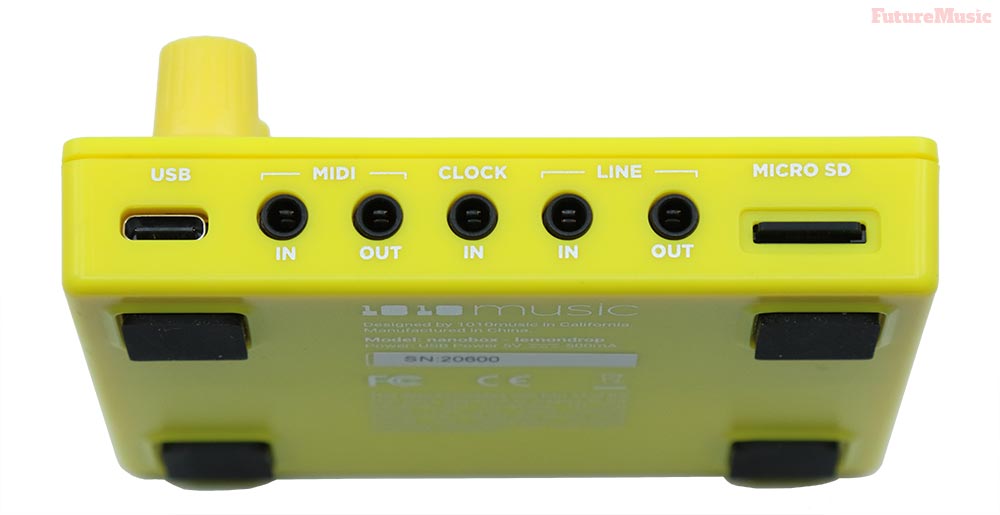
1010Music Lemondrop Features:
- Simple Interface: 2″ (diagonal) touchscreen, Two knobs, Four buttons
- Four voice polyphony
- Two granulators – One oscillator
- 16 grains per oscillator for a total of 128 | Sample memory per oscillator 30 seconds
- Two filters, Two envelopes, Two LFOs, and a modulation sequencer
- Six onboard effects: chorus, phaser, delay, flanger, distortion and reverb
- MIDI Implementation: Note On/Off, Mod Wheel, Sustain, Pitch Bend, Mono & poly Aftertouch, assignable CCs, and clock
- Morph and shape sounds in realtime with the touchscreen X/Y control
- Comes preloaded with over 150 presets and over 300 wav files plus you can load your own via micro-SD
- I/O (3.5mm TRS Minijack): Line In/Out | MIDI In/Out | Clock In
- MicroSD Card Slot
- Power: USB C 5V, 500mA connection or USB battery pack; cable included, but not power brick
- Dimensions: 3.75″ x 3″ x 1.5″ | Weight: 0.25 lbs.
The final part of the signal chain contains the six effects. You can choose distortion, flanger, chorus and a phaser on one buss, and delay or reverb on the other. We had the best results with the distortion, chorus and ping-pong delay, since the parameters are somewhat limited, but the other effects are useful as well.
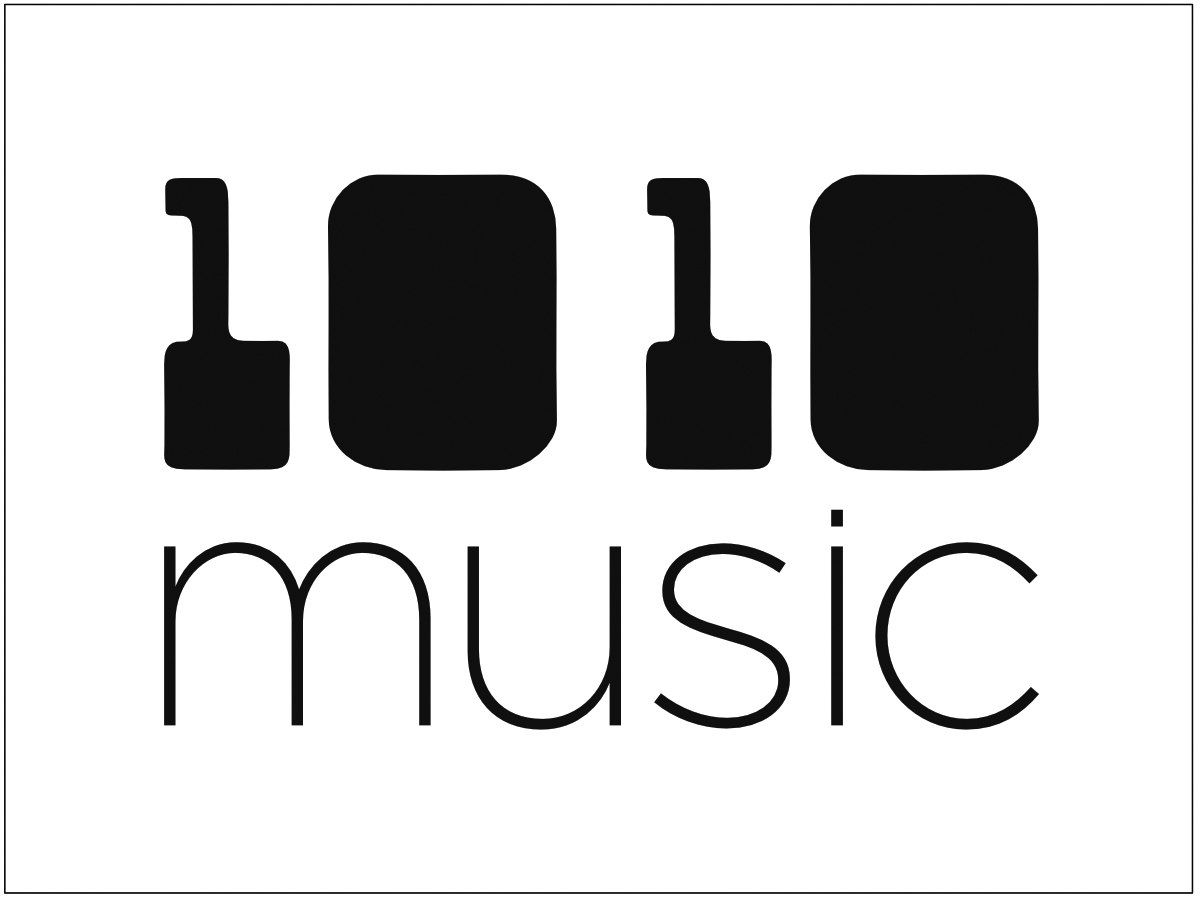

The easiest way for electronic musicians to get their music onto Spotify, Apple Music, iTunes, Amazon Music, Tidal, Instagram, Facebook, TikTok, Pandora, Twitch & much more! Click the banner above or the Go Button to save 7% off of your signup! GO!
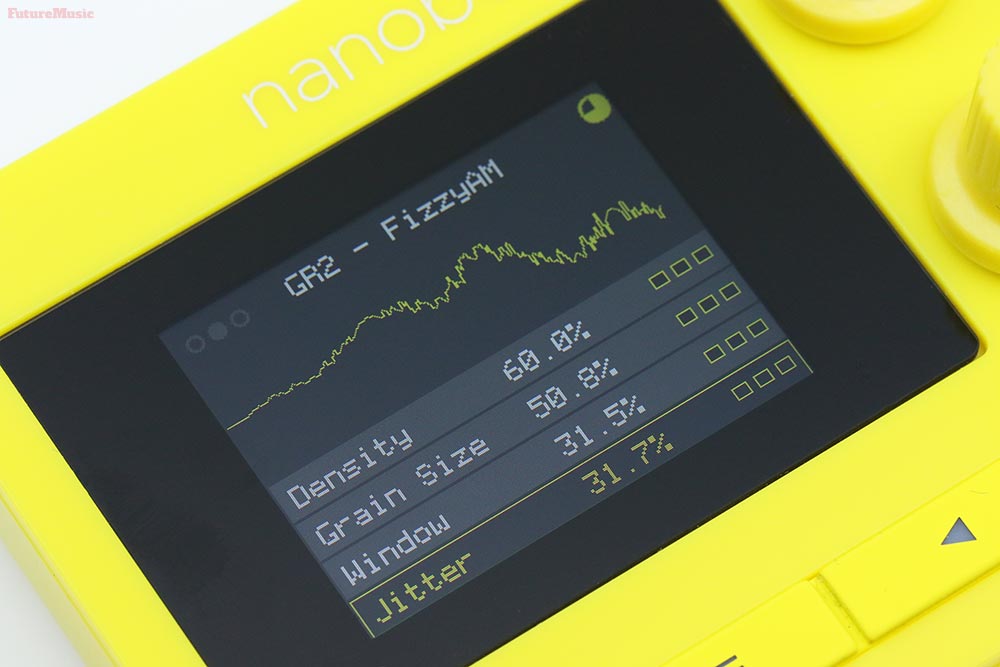
For both the Fireball and the Lemondrop, we were pleased with the build quality and the whimsical aesthetic. 1010Music didn’t cut corners on the plastic chassis, the buttons or the big knobs. No you won’t find those toothpicks found on other mini synths, 1010 provides you with some tasty knobs to get down to business. We’d love to see them better utilized for the filter section, as mentioned above, or the effects. Sure, there’s a cool X/Y pad for morphing and evolving sounds, and we’ll get to that in a moment, but with Knobs Made For Tweaking, we’re wondering what else can these puppies can boogie to.
We also loved the playful look of the nanoboxes. The Lemondrop is full on yellow, including the USB cable. The same goes for the Fireball, which is vivid red. We liked how the color choices added some pop to our black and silver dominated microstudio. The candy naming convention adds to the lighthearted nature.
Both the Fireball and the Lemondrop can sync to either MIDI Clock, Internal Clock or Analog Clock. There is a spinning beach ball in the upper right corner of the touchscreen that indicates the tempo, however this probably could be better represented visually to inform the user of the actual tempo, perhaps in the form of a pulsating BPM.
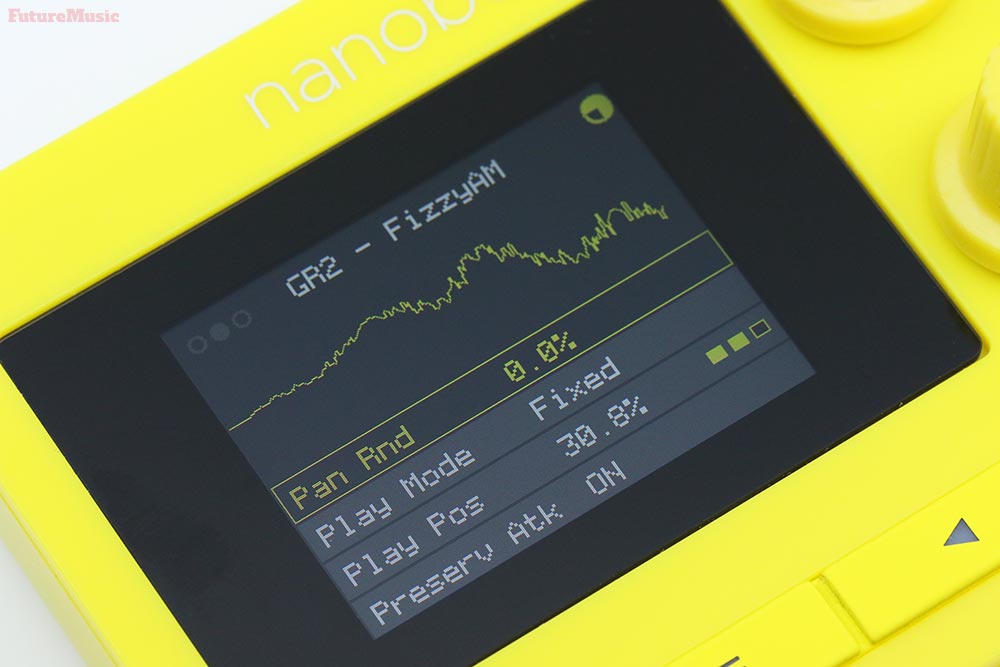
1010Music’s Lemondrop granular synthesis engine has extensive options you won’t find in competing products
The granular synthesis behind the Lemondrop is far more sophisticated than you’d expect. There are parameters for granular size and density – how many grains are playing back – as well as a four octave range (two up and two down) for Pitch variation. There is also Level indicator to modulate the gain. However, 1010Music has added a few parameters to freshen things up, including a Pan parameter for tossing the grains aimlessly into the stereo spectrum and a Detune that randomly unsettles the grains during playback. Jitter adds some dynamic timing variation to keep it unpredictable and weird. Preserve Attack is savvy way of maintaining the punch of the grains, which we felt yielded great results when the other parameters ventured into sheer lunacy.
Tapping the waveform on the touchscreen allows you to select one of the 313 onboard .wav files, or permits you to upload you own. We found this to be insane fun and uploaded all sorts of sounds to see how the granular engine would shred our sample. There seems to be a 30 second max to uploads, but we didn’t find that to be a limitation. Finally, there’s a methodology for syncing the grains to clock, providing a rhythmic element that is quite well suited for electronic music. To beef up your patch, just add a complementary waveform from the single oscillator. Notwithstanding its physical presence, the engine behind the Lemondrop packs a wallop and will keep you enthralled for hours.

1010Music Fireball Wavetable Synth
Next up we have the red hot Fireball, a wavetable synth with the same form factor and operating system as the Lemondrop. Once you learn how to use either, jumping between them is seamless, and this is precisely what 1010Music had in mind when developing this new mini synth series. The Fireball has a present, clean sound that doesn’t shy away from its digital roots. With eight voice polyphony, it can loom large and bold with in-your-face roars or drop down into lush, emotional pads.
“We’re constantly on the look out for opportunities that play into our strengths,” Aaron Higgins remarks, “specifically digital music gear using a touchscreen.”
Each sound can use two wavetables, an oscillator and two busses of effects. This opens up the possibility to create very complex structures utilizing the wavetables that 1010 provides, or permitting you to upload your own creations. The 3.5mm TRS I/O may give you pause, but like 1010Music’s Bluebox, we’re delighted to report the sound comes away unsullied with plenty of bite. Speaking of the Line Input, you can use both the Fireball and the Lemondrop to process incoming signals from any source. Use the onboard effects, or better yet, add the synthesis engines to process incoming sounds for incredible soundscapes and textures. We loved the input to process drum machines and samples, but it works amazing with other synths as well.

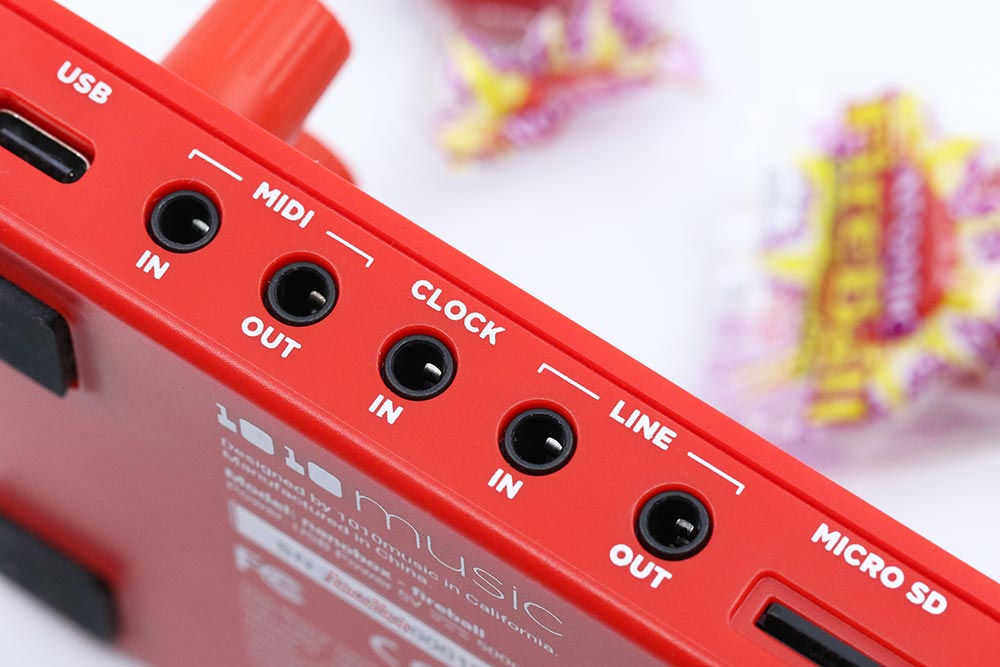
1010Music Fireball Features:
- Simple Interface: 2″ (diagonal) touchscreen interface plus two knobs and four buttons
- Eight voice polyphony, Two wavetables, and One oscillator
- Two filters, Two envelopes, Two LFOs, and One modulation sequencer
- Six onboard effects on two busses, including flanger, distortion, chorus, phaser on one buss, and delay and reverb on the second
- Choose from hundreds of professionally developed presets and wav files or upload your own wavetables via micro-SD
- Morph and shape sounds in realtime with the touchscreen X/Y control
- I/O (3.5mm TRS Minijack): Line In/Out | MIDI In/Out | Clock In
- MicroSD Card Slot
- Power: USB C 5V, 500mA connection or USB battery pack; cable included, but not power brick
- Dimensions: 3.75″ x 3″ x 1.5″ | Weight: 0.25 lbs.
The Fireball is a basic wavetable synthesizer, and while it may not be as sophisticated as the Lemondrop, we were pleased with the sound quality, the versatility of the results and the ability to upload your own wavetables. Both the Fireball and the Lemondrop have a X/Y pad for realtime modulation that can be completely customized with dozens of parameters, including the filters, effects and sound sculpting attributes. Both units house an Internal Modulation Sequencer. The bipolar steps can be hand drawn with the touchscreen or manipulated using the knobs and it can be assigned to a modulation source. If you don’t have a MIDI keyboard attached to a nanobox, you can use the Grid Keyboard, very similar to the Blackbox, where you can set a scale and root note, as well as use the Hold function to trigger a single note – great for auditioning.
Conclusion
If the Lemondrop and Fireball are any indication of what 1010Music has in the pipeline for this new nanobox series, buckle up! Both units punch way above their weight and are sure to please. Flexible, fun and the results will certainly leave a smile on your face. However, we know what you’re going to ask: If I only have $400 beans, which one should I get?
We would have to say the Lemondrop. After using both for about a month, we think the way that 1010Music has approached granular synthesis should be commended. Highly Recommended.
Fireball Rating: 90%
Lemondrop Rating: 96%
Cheers:
+ Innovative
+ Sound Quality
+ Fun To Program
+ Beyond Portable
+ Build Quality
+ Tasty Knobs
+ Audio Input
Jeers:
– No Power Switch
– BPM Indicator
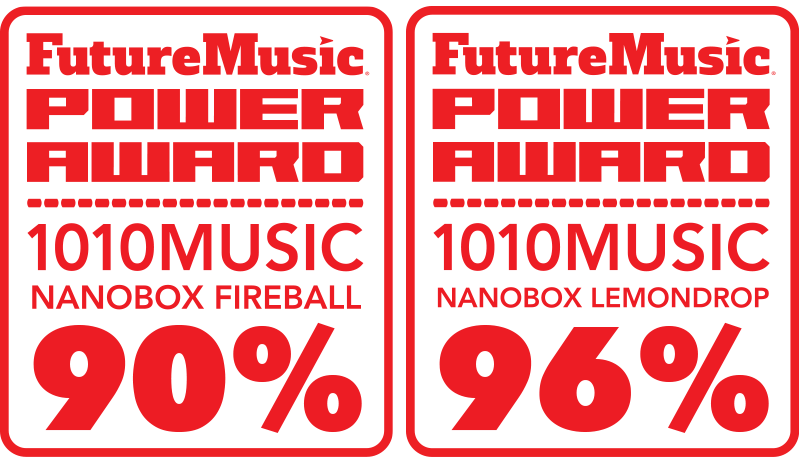
1010Music’s nanoboxes cost $399.99 each.
The Future: While 1010Music does include a customizable X/Y Pad for realtime modulation, we just can’t let go of the notion to employ those sweet knobs for tweaking the filter frequency and resonance at the same time, as well as some other combinations.


